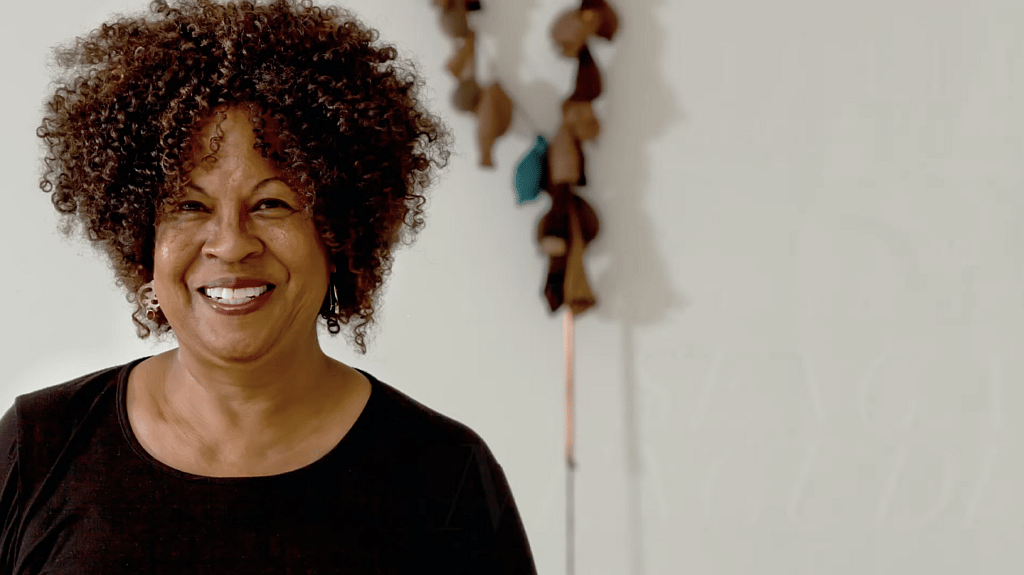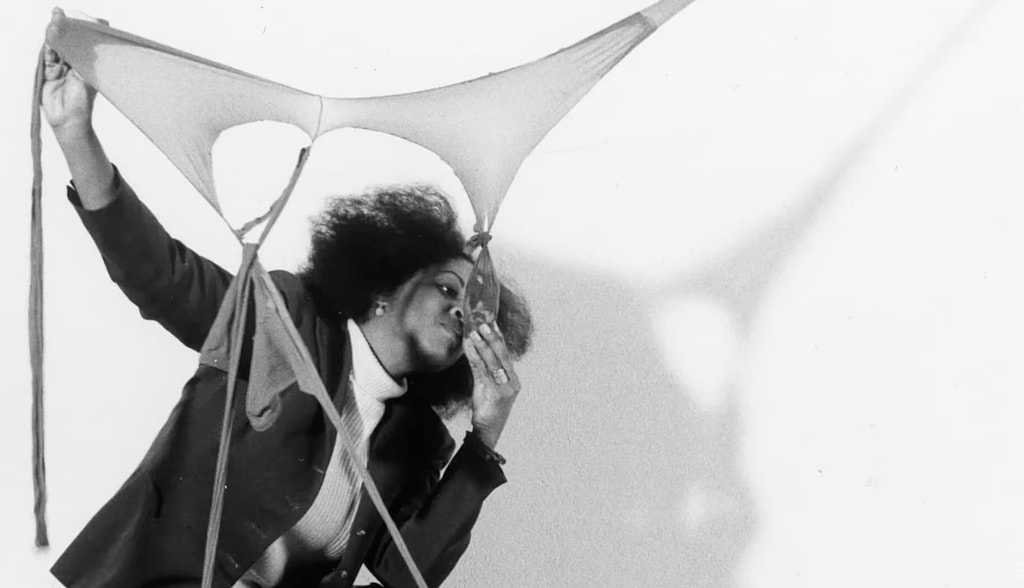The Nasher Sculpture Center created a special prize in 2015 to celebrate “a living artist who elevates the understanding of sculpture and its possibilities,” and a Black woman is receiving the honor for the first time.
According to The Washington Post, Senga Nengudi, 79, an acclaimed artist whose unique sculptures incorporate nylon pantyhose and other miscellaneous items and spans more than half a century, is the 2023 recipient of the Nasher Prize from the Dallas-based museum.
Nengudi’s work, which has ably addressed the feminist and Black arts movements, is renowned for defying expectations and elevating artistic expression to a new level. For example, she once hung “fabric spirits,” fashioned from flag material from fire escapes in Harlem, to represent what she called the souls of the people she encountered there.

The most notable of her artistic transformations was a dedication to the female body made out of worn-out pantyhose, in places filled with sand. Nengudi claimed that the concept, collectively referred to as “R.S.V.P.,” came to her following the birth of her first child.
“I was looking for material that kind of reflected the female body,” she previously told curator Elissa Auther, according to The Post. “And then, finally, I found the pantyhose. Right after that, I went, ‘Wow,’ because the whole birthing experience — you’re expanding, and then all of a sudden, after it’s over, you’re contracting, and your body kind of goes back into shape. I really wanted to somehow express that experience.”
Nengudi, a Chicago native, studied both dance and art at what is now UCLA. Her experience at the former Pasadena Art Institution is said to have opened her eyes to the ways in which the two can coexist. She also volunteered in art programs at Watts Towers.
Japan attracted her in the 1960s after she became fascinated by Gutai, a radical Japanese art style in which artists painted canvases with their feet while rolling around in mud half-naked. When Nengudi resettled in Los Angeles, she established Studio Z, a Black art collective, and collaborated with fellow artists David Hammons and Maren Hassinger.
Nasher director Jeremy Strick praised Nengudi for her innovative collaborations, which frequently combine dance, performance art and her crafted sculpture. He also acknowledged her use of inexpensive materials in accessible locations and her engagement with social issues that remain relevant.

“In more recent years, the extraordinary creativity of the Black art community — which, in the ’70s and ’80s, was in many ways marginalized — is now being recognized,” said Strick, The Post reported. “And so she occupies a critical place in the history of Black arts but also of art, period.”
Strick maintained that Nengudi continues to convey a powerful message through her work at a time when many states, the majority of which are controlled by Republicans, are taking away a woman’s right to make her own decisions regarding her body.
For instance, the state of Texas, where the Nasher Sculpture Center is housed, has one of the nation’s strictest abortion bans in place and, based on a statement from Gov. Greg Abbott in June, its elected officials are also proud advocates for overturning Roe v. Wade.
“At a moment when the right of women to control their bodies has been taken away, she’s an artist whose exploration of female identity through works made with pantyhose speaks with great power and relevance,” Strick said of Nengudi, according to The Post.
Although prominent institutions — such as the Philadelphia Museum of Art and New York’s Museum of Modern Art — have honored Nengudi, she believes that in some respects, such acknowledgments are at odds with the essence of her work.
“An artist’s supposed greatest desire is the making of objects that will last lifetimes for posterity after all,” she has said, according to The Post. “This has never been a priority for me. My purpose is to create an experience that will vibrate with the connecting thread.”
The Colorado-based creator is set to receive $100,000 for winning the 2023 Nasher Prize, followed by programming devoted to her art, such as gallery exhibits and conversations, and a gala is scheduled in April.
TheGrio is FREE on your TV via Apple TV, Amazon Fire, Roku and Android TV. Also, please download theGrio mobile apps today!

